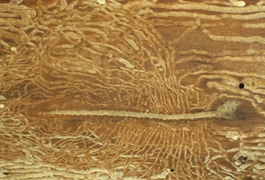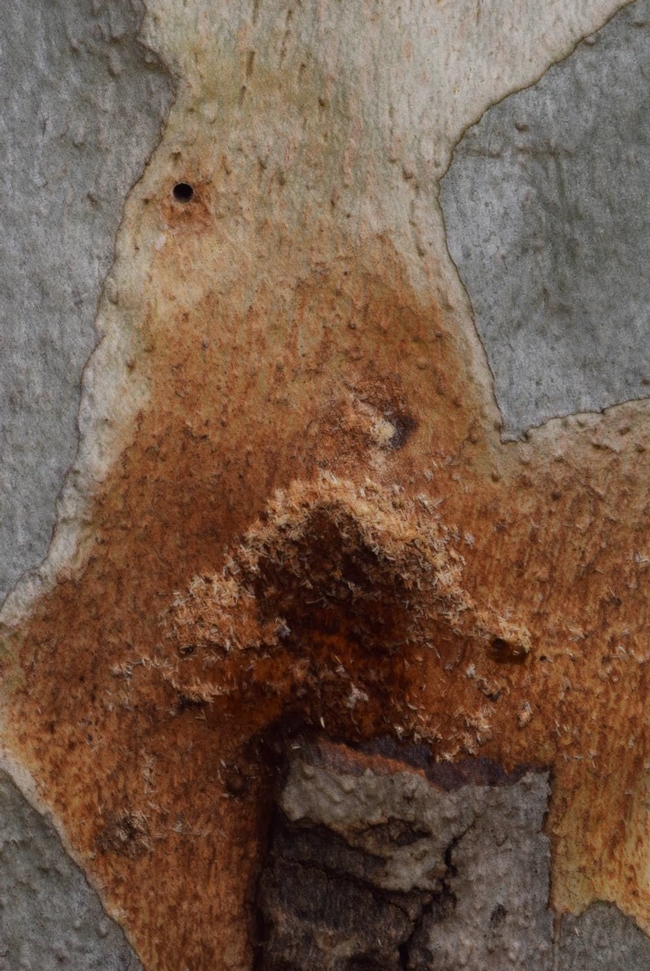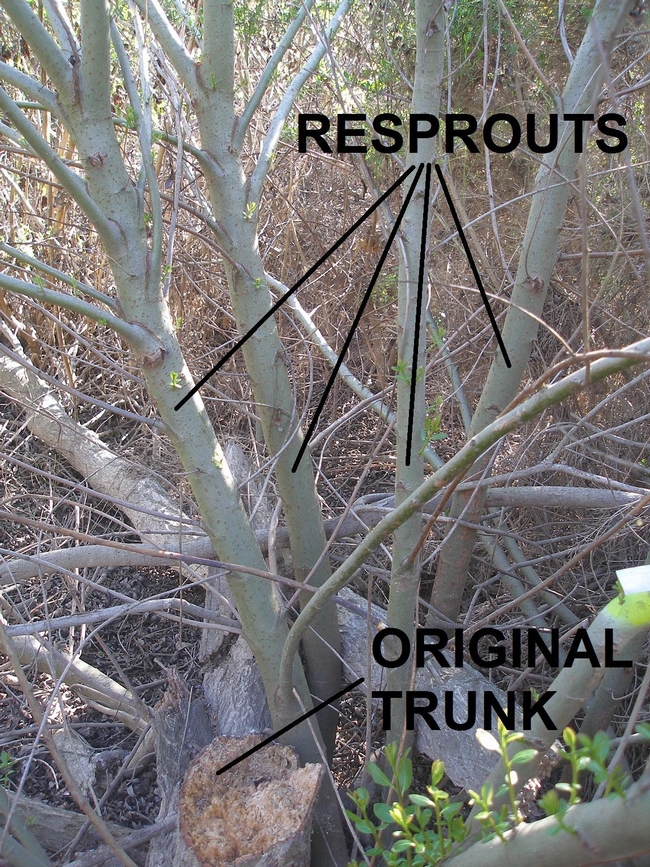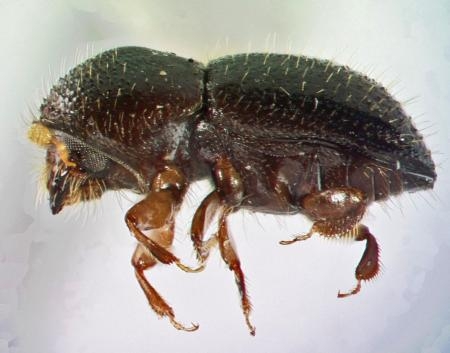
Posts Tagged: Invasive shot hole borer
What's Happening With Shot Hole Borer?
This is the most recent activity summary of a group of organizations working on the Invasive Shot Hole Borers and their associated fungal symbionts. This pest/disease complex affects avocado along with a large number of native and landscape plants in California, as well as in other parts of the world (http://ucanr.edu/sites/pshb/; http://ucanr.edu/sites/pshb/files/238251.pdf):
Invasive Shot Hole Borers
Quarterly Situation Report
January through March 2018
Executive Summary
Overview
Education, outreach, and monitoring activities were robust during the cool damp winter months of 2018. Infestations continued to dominate Orange, San Diego, and Los Angeles counties, with lesser activity in Ventura and Santa Barbara counties. The need for funding of research, education, outreach, and waste management associated with ISHB was brought to the attention of state governance. Preventative efforts to increase awareness of ISHB in unaffected counties continued. Collaborative efforts of numerous agencies, educational institutions, and non-profit groups resulted in the successful efforts listed below.
Statewide
The two-day Invasive Species Summit was held in the State Capitol for legislators and their staff to learn about environmental pressures and costs created by these species statewide. Three pieces of proposed legislation were written either specific to or with components addressing ISHB. They are: AB 2054 (Gonzlez Fletcher), AB 2166 – California Farm Bill, AB 2470 (Grayson) – Invasive Species Council.
The Statewide SHB Network convened telephonically to discuss ISHB, spread, threat, and help educate those in unaffected counties. An ISHB presentation was given at a statewide horticultural convention in northern California.
The triennial California Native Plant Society Conservation Conference was held near Los Angeles International Airport. ISHB was addressed at a pre-conference invasive species workshop, throughout the conference by tabling and poster session, and during the Invasive Species Session.
Regional
UCCE San Diego helmed a two-part GSOB/ISHB-FD webinar, along with other UCCE and CALFIRE collaborators. The first installment streamed in March.
UCCE San Diego began work on an online ISHB survey assessment tool that will be accessible when completed on PSHB.org. This feature will help the public determine if tree symptoms may be due to an ISHB infestation. An added component will allow UCCE to monitor reporting. The decision tree that is part of the assessment takes the reporter to part of the site whereby photos can be submitted if the tool determines a probability of ISHB infestation. This tool will be completed, tested, reviewed, and posted to the website by summer 2018.
San Diego County
- Two ISHB public educational events were presented
- Buy It Where You Burn It campaign distributed literature countywide
Orange County
- Four ISHB public educational events were presented
- Numerous trap and monitoring sites are established throughout the county primarily in wildlands and parks
- Orange County Waste and Recycling learned 28% of all trees at Prima Deshecha Landfill in San Juan Capistrano are infested with ISHB/FD or Botryospaeria. Most of the vegetation at this site is comprised of native species
- A post-incident GSOB/ISHB reconnaissance was conducted in Weir Canyon, where the Canyon II Fire burned in autumn 2017
- Orange County Parks continued to track tree losses and costs associated with ISHB infestations on its properties. An economic report was publicly released
Los Angeles County
- Three ISHB public educational events were presented
- A funding request was submitted to County governance to continue the ISHB trapping program coordinated by the Resource Conservation District of the Santa Monica Mountains
- The Huntington continued monitoring and green waste processing at the 207-acre facility. An ISHB trapping trial by principal investigator at UC Riverside was initiated that utilizes castor wood as the attractant
Ventura County
- Twenty-six traps are established and monitored in the Santa Clara River watershed extending from the estuary to Piru
- Fifteen traps are established and monitored in the Ventura River watershed. This number is down by two after being lost during the Thomas Fire
- A new infestation was identified in the City of Santa Paula proximal to a known infestation in the Santa Clara River
- One ISHB educational event was presented to Master Gardeners
Santa Barbara County
- Seven traps are being monitored in Montecito and the City of Santa Barbara
- Three traps in Montecito were lost from the January debris flow disaster
- One ISHB educational event was presented to Master Gardeners
San Luis Obispo County
- One ISHB educational event was presented to Master Gardeners
Articles:
A. Raver. The tiny menace. Landscape Architecture Magazine. March 2018.
https://landscapearchitecturemagazine.org/2018/03/13/the-tiny-menace/
Images:
Shot Hole Borer galleries, cottonwood
Shot Hole Borer entry point, sycamore. Curtis Ewing, CAL FIRE

shot hole borer galleries

shot hole borer sycamore
Invasive Shot Hole Borer Gone Global
Natural Resources Advisor, UC Cooperatiove Extension
With a finding in the KwaZulu National Botanical Gardens reported in November 2017, the invasive shot hole borer (ISHB) (polyphagous and Kuroshio borers)/ fusarium dieback pest disease complex is now known to be found on three continents. Native to parts of Asia – polyphagous SHB comes from Vietnam, while Kuroshio SHB is native to Taiwan – the problems has spread to Israel, the US, Mexico, and now South Africa. Since first being discovered, PSHB has been identified in urban areas in parts of the country that are several hundred miles apart – from Durban on the east coast to the large metropolitan area of Johannesburg further north, with the Botanical Garden in-between. Samples from the city of George, in a region on the southern coast known as the Garden Route, are currently being analyzed. South Africans are very concerned about the potential to damage their extensive urban forests and are developing a national surveillance and management plan. KwaZulu National Botanical Garden is part of the International Plant Sentinel Network, where exotic species are grown to provide an early warning system for emerging pests. The US counterpart if the Sentinel Plant Network run by the American Public Gardens Association and the National Plant Diagnostic Network. Finding this pest serves as a case in point on the value of these kinds of international networks in the battle against invasive pests.
Closer to home, there is actually, potentially, maybe some good news from the Tijuana River Valley. This is the valley that has been the hardest hit by the KSHB. In 2015 the natural willow forests were tall and lush and then just a few months later they were devastated - the before-and-after photos of this event have become iconic. John Boland, a researcher working in the Tijuana River Valley reports that in areas that were severely damaged by the pest, the willows are now vigorously recovering. They are growing back from their stumps via long re-sprouts, and this new growth is not showing signs of attack. Surveys in 2017/18 found a 6% median infestation rate, down from a 97% infestation rate observed in 2015/16. The initially observed high infestation rates in the wet forest areas may have been influenced by extremely high sewage pollution into the Tijuana River, and these high infestation rates are unlikely to occur elsewhere. Boland's “soft tree hypothesis” states that willows growing in nutrient enriched waters grow quickly, laying down wood with low density and high water content, i.e., they have ‘soft' wood. This kind of growth promotes beetle infestation, as it's easy to create tunnels, and favorable for the fungal symbiont. Willows growing elsewhere would have ‘hard' wood and suffer fewer beetle attacks. His initial data analysis supports this hypothesis. If true, this would mean that riparian areas with higher quality water could see much less severe infestation. It will be interesting to observe variations in infestation ecology around the region. Damage to avocado groves in California appears to be less severe than initially anticipated – I hope the same is true for natural areas.
Boland, J.M. 2018. The Kuroshio Shot Hole Borer in the Tijuana River Valleyin 2017-18 (Year Three):
Infestation Rates, Forest Recovery, and a New Model. Final Report for US Navy, US Fish and Wildlife Service and Southwest Wetlands Interpretive Association. 74 pages.
Photo: A typical resprouting arroyo willow. The original trunk is large, broken and riddled with KSHB holes. At the time of the photo, the four vertical resprouts were growing strongly and had no KSHB holes. (John Boland)

Boland willow
More Shot Hole Borer News
Ambrosia beetles comprise a group of over 6,000 species in the Scolytinae subfamily. Most of these beetles typically attack decomposing and dead trees. The Polyphagous/Kuroshio Shot Borers have been reports on over 300 landscape and wildland living tree species, including avocado. Decline and death of trees has been noted in California since 2012, and the full economic extent is still unclear. The beetles feeds on a fungal symbiont that is introduced into the tree, and it is the fungus that spreads throughout the tree and causes the tree decline and death.
What was once thought to be another species of beetle (Tea Shot Hole Borer) and then identified as a new species - Polyphagous Shot Hole Borer- and now expanded to include another species of borer – Kuroshio Shot Hole – is showing that its fungal partners can be quite diverse. A recent publication indicates the increasing tangled association of the shot hole borer/disease complex that is affecting avocado and other tree species.
Two Novel Fungal Symbionts Fusarium kuroshium sp. nov. and Graphium kuroshium sp. nov. of Kuroshio Shot Hole Borer (Euwallacea sp. nr. fornicatus) Cause Fusarium Dieback on Woody Host Species in California
Francis Na, Joseph D. Carrillo, Joey S. Mayorquin, Cedric Ndinga-Muniania, and Jason E. Stajich, Department of Plant Pathology and Microbiology, University of California, Riverside, 92521; Richard Stouthamer, Department of Entomology, University of California, Riverside, 92521; Yin-Tse Huang, Department of Plant Pathology, National Chung Hsing University, Taichung 402, Taiwan, ROC, and School of Forest Resources and Conservation, Institute of Food and Agricultural Sciences, University of Florida, Gainesville; Yu-Ting Lin and Chi-Yu Chen, Department of Plant Pathology, National Chung Hsing University, Taichung 402, Taiwan, ROC; and Akif Eskalen,† Department of Plant Pathology and Microbiology, University of California, Riverside, 92521
https://apsjournals.apsnet.org/doi/abs/10.1094/PDIS-07-17-1042-RE
Shot hole borer (SHB)-Fusarium dieback (FD) is a new pest-disease complex affecting numerous tree species in California and is vectored by two distinct, but related ambrosia beetles (Euwallacea sp. nr. fornicatus) called polyphagous shot hole borer (PSHB) and Kuroshio shot hole borer (KSHB). These pest-disease complexes cause branch dieback and tree mortality on numerous wildland and landscape tree species, as well as agricultural tree species, primarily avocado. The recent discovery of KSHB in California initiated an investigation of fungal symbionts associated with the KSHB vector. Ten isolates of Fusarium sp. and Graphium sp., respectively, were recovered from the mycangia of adult KSHB females captured in three different locations within San Diego County and compared with the known symbiotic fungi of PSHB. Multigene phylogenetic analyses of the internal transcribed spacer region (ITS), translation elongation factor-1 alpha (TEF1-α), and RNA polymerase II subunit (RPB1, RPB2) regions as well as morphological comparisons revealed that two novel fungal associates Fusarium kuroshium sp. nov. and Graphium kuroshium sp. nov. obtained from KSHB were related to, but distinct from the fungal symbionts F. euwallaceae and G. euwallaceae associated with PSHB in California. Pathogenicity tests on healthy, young avocado plants revealed F. kuroshium and G. kuroshium to be pathogenic. Lesion lengths from inoculation of F. kuroshium were found to be significantly shorter compared with those caused by F. euwallaceae, while no difference in symptom severity was detected between Graphium spp. associated with KSHB and PSHB. These findings highlight the pest disease complexes of KSHB-FD and PSHB-FD as distinct, but collective threats adversely impacting woody hosts throughout California.

pshb insect
